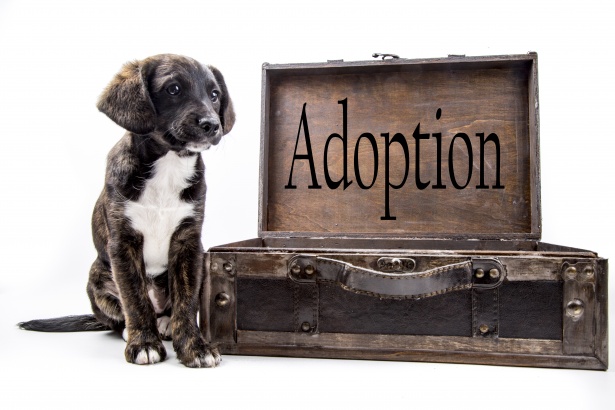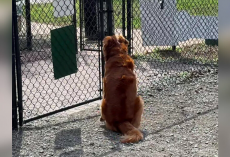Thinking about adopting a dog?
It’s easy to picture the fun parts — long walks, couch snuggles, and endless playtime — but there’s a lot more to adoption than choosing a cute face. Bringing home a rescue dog comes with important responsibilities, decisions, and questions.
This guide breaks down everything you need to know so you can confidently find the dog that’s truly right for you.
What Is a Rescue Dog?
A rescue dog is any dog adopted from a shelter, rescue organization, or a previous owner. Unlike purchasing from a breeder or pet store — which is often more expensive and adds to overpopulation — adoption gives a dog in need a second chance.
Rescue dogs come from all kinds of situations. Some have been neglected or abandoned, some are surrendered by owners facing difficult circumstances, and others are puppies or purebreds whose previous families couldn’t keep them. There really is every type of dog in the rescue world.
Should I Adopt a Dog?
Before searching for adoptable dogs, take time to honestly assess whether you’re ready for lifelong commitment. Ask yourself:
- Do I have enough time for a dog?
Daily care, exercise, training, and companionship all require consistency. - Am I financially prepared?
Food, vet visits, grooming, supplies, and emergencies add up. - Do I have enough space?
Your home, yard, and lifestyle should match the dog’s needs.
If you can confidently say yes — not just to adopting a dog, but to caring for her long-term — you’re in a good place to begin.
Where to Adopt a Dog
You can adopt a dog from:
- Local shelters
- Rescue organizations
- Individuals rehoming their dog (often due to moves or life changes)
Rescue vs. Shelter — What’s the Difference?
Although the terms are often mixed up, rescues and shelters work differently:
Rescue Organizations
- Usually volunteer-run and donation-funded
- Often rely on foster homes, not a single facility
- Adoption processes can be more detailed and may take longer
- Offer personalized matchmaking since foster families know the dogs well
Animal Shelters
- Government-funded and staffed
- Dogs are housed in one building
- Many allow same-day adoption
- Application processes may be simpler and quicker
Both are essential, and both offer amazing dogs.
Adopting vs. Fostering — What’s the Difference?
Adopting means committing to a dog for life.
Fostering means providing a temporary home until the dog is ready for adoption.
Fostering is a great way to help a dog in need and get a feel for dog ownership — like a trial run, but with a big impact.
How to Foster a Dog
- Fill out an application.
- Meet your potential foster dog.
- Help her settle into your home.
- Work on basic training and structure.
- Assist the rescue with finding her a forever home.
How Much Does It Cost to Adopt a Dog?
Adoption fees usually range from $0–$750, though most fall on the lower end.
Costs of adopting a dog vary based on location, organization, breed, and age. The great thing is that adoption fees often include essential veterinary care, such as:
- Initial wellness exam
- Core vaccines (rabies, distemper, parvovirus, Bordetella)
- Heartworm testing/prevention
- Flea and tick prevention
- Fecal testing and deworming
- Spay/neuter surgery
- Microchip
This can save you hundreds right from the start.
Can You Adopt a Purebred Dog?
Absolutely — and many people do!
Shelters and rescues regularly take in purebreds and puppies. Some organizations even specialize in specific breeds. With a bit of research, you can find breed-specific rescues such as:
- Delaware Valley Golden Retriever Rescue
- New Jersey Schnauzer Rescue Network
- Carolina Poodle Rescue
- Yorkie 911 Rescue
- Husky House
If you’re looking for a particular breed, adoption is still a great place to start.
Questions to Ask When Adopting
When you meet a dog you’re interested in, here are key questions to bring:
Background
- How did the dog come into the rescue?
- What’s their estimated age and breed?
Medical
- Are they spayed/neutered?
- Any known health issues?
- Do they need special food or medication?
Behavioral
- Are they good with kids? Cats? Other dogs?
- Any known fears or triggers?
- Do they show separation anxiety?
Asking these questions helps ensure you’re prepared to meet the dog’s needs — and that she’s the right match for your home.
Do Rescue Dogs Need Special Training?
Not always. Some rescue dogs arrive already trained or housebroken — a huge perk.
Others may need guidance depending on their past. Give your dog time to decompress when she first arrives, then begin training just as you would with any new dog. Patience and consistency go a long way.
How to Find the Right Dog for You
Go into the shelter or rescue knowing:
- What you absolutely need (energy level, size, temperament, etc.)
- What you can’t handle (severe reactivity, heavy shedding, high energy, etc.)
This clarity helps staff guide you toward dogs that truly fit your lifestyle.
Tips for Bringing Your Dog Home
1. Prepare Your Home First
Gather essentials ahead of time:
- Food and bowls
- Bed and blankets
- Collar, ID tag, and leash
- Toys and treats
2. Give Her Time to Decompress
When your dog first arrives:
- Keep things calm and quiet
- Don’t overwhelm her with guests or too much attention
- Allow her to explore at her own pace
Decompression is completely normal — and incredibly important.
What If I Need to Return an Adopted Dog?
Before adopting, always ask about the organization’s return policy.
Returning a dog should be a last resort, but life can be unpredictable. Most issues — training, behavior, medical concerns — can be improved with help from a vet or trainer. Support is available, and challenges are usually fixable.
Final Thoughts
Adopting a dog is one of the most fulfilling decisions you can make — but it’s also a big one. Take things step by step, be honest about what you can provide, and prepare for a life filled with loyalty, humor, and incredible cuddles.











